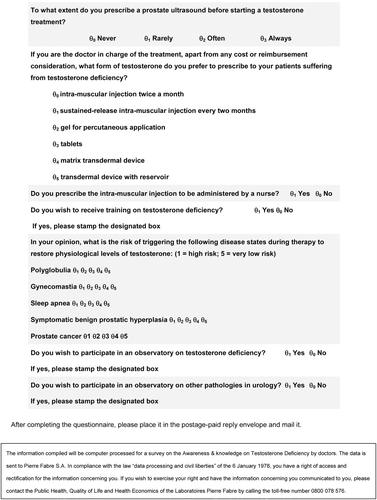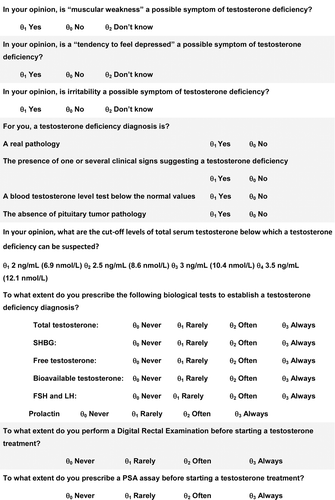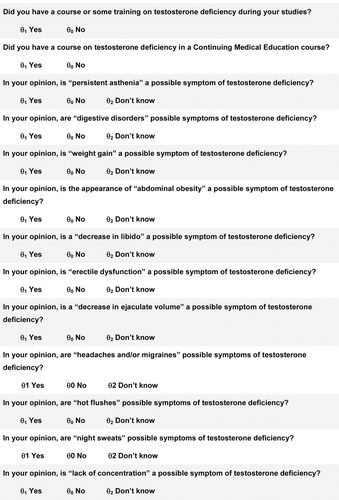Figures & data
Figure 1. The Transversal European survey on testosterone deficiency diagnosis (TESTo-Dia) questionnaire.
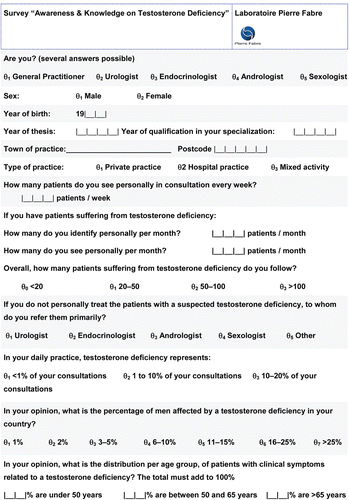
Figure 2. Physicians’ responses “yes” to questions on training and continuous medical education. Question: Did you have a course or some training on testosterone deficiency during your initial medical education? 1) Yes; 2) No; Question: Did you have training on testosterone deficiency as part of a Continuing Medical Education course? 1) Yes; 2) No.
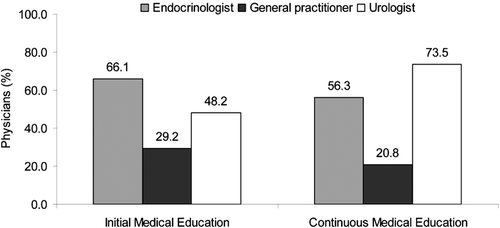
Table I. Percentage of responding physicians (n = 801) agreeing to signs and symptoms of testosterone deficiency syndrome.
Figure 3. Physicians’ responses to questions regarding testosterone cut-off values. Question: In your opinion, what are the cut-off levels of total serum testosterone below which a testosterone deficiency can be suspected? 1) 2 ng/mL (6.9 nmol/L); 2) 2.5 ng/mL (8.6 nmol/L); 3 ng/mL (10.4 nmol/L); 4) 3.5 ng/mL (12.1 nmol/L).
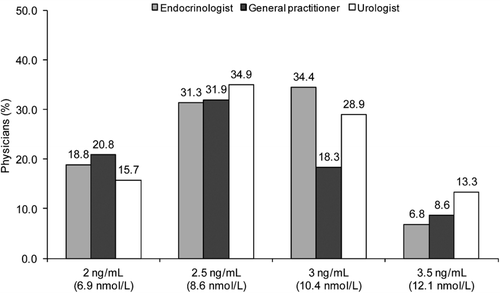
Figure 4. Physicians’ responses “Often/Always” to questions regarding laboratory assays used. Question: To what extent do you request the following laboratory tests to establish a testosterone deficiency diagnosis? 1) Total testosterone; 2) Free testosterone; 3) Bioavailable testosterone; 4) sex hormone-binding globulin (SHBG); 5) follicle-stimulating hormone (FSH) and luteinizing hormone (LH); 6) Prolactin. Never/Rarely/Often/Always.
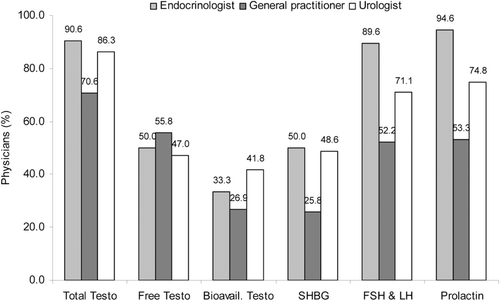
Figure 5. Physicians’ responses to questions regarding treatment preferences. Question: If you are the doctor in charge of the treatment, apart from any cost or reimbursement consideration, what form of testosterone do you prefer to prescribe to your patients suffering from testosterone deficiency? 1) intra-muscular injection twice a month; 2) intra-muscular injection every three months; 3) matrix transdermal device; 4) gel for percutaneous application; 5) tablets. As the data represent an integration of ranked maximal preferences, they do not exactly total 100%.
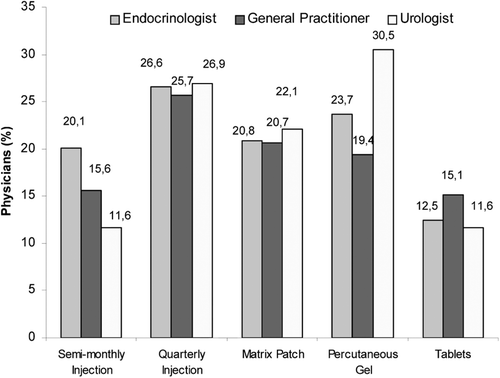
Figure 6. Physicians’ responses “1/2” to questions regarding potential adverse effects. Question: In your opinion, what is the risk of triggering the following disease states during therapy to restore physiological levels of testosterone: (1 = high risk; 5 = very low risk)? 1) polycythemia; 2) gynecomastia; 3) sleep apnea; 4) symptomatic benign prostatic hyperplasia (BPH); 5) prostate cancer.
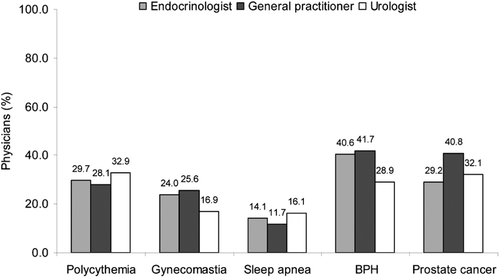
Table II. Physicians’ perceived risks of prostate cancer associated with testosterone replacement therapy.
